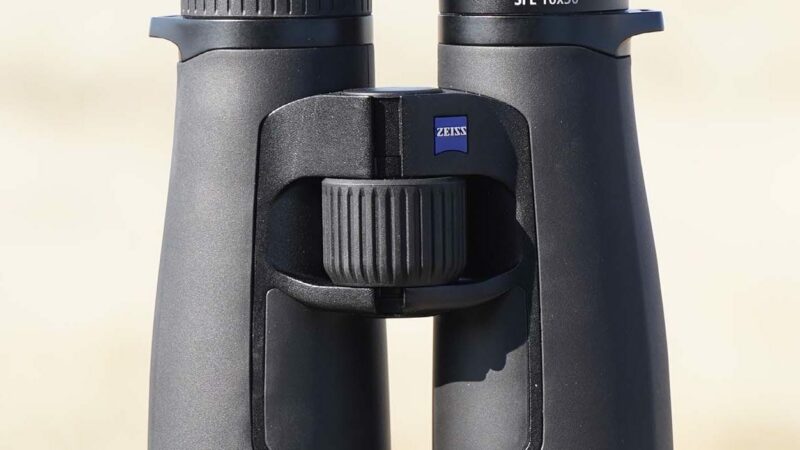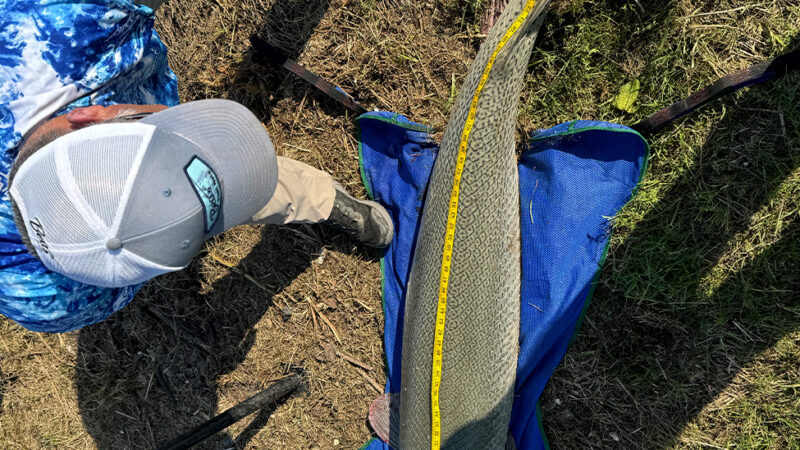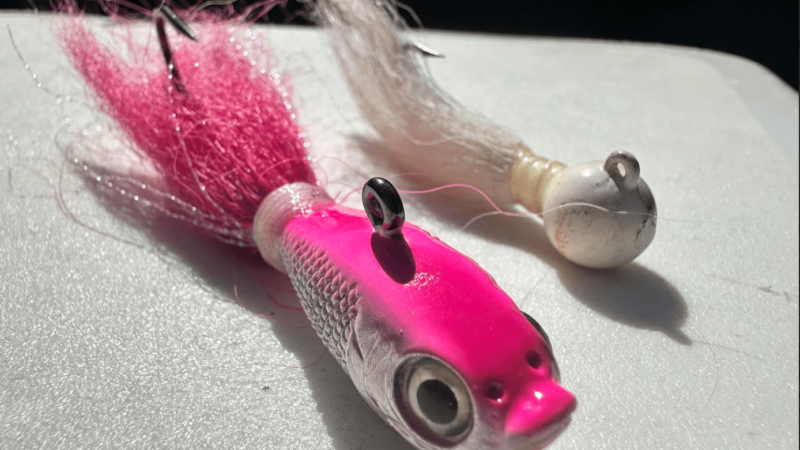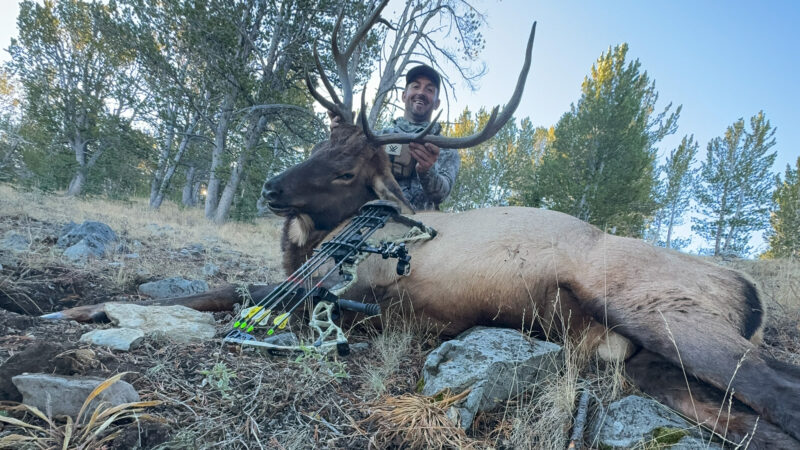I Fought Off a Brown Bear with My Fishing Rod, and Other Close Calls While Living in Remote Alaska
Lying on a gravel bar in the middle of a tiny creek in remote Alaska, I brought a brown bear into focus through a telephoto camera lens. It was neck-deep in water, head resting on a fallen tree limb, searching for sockeye salmon.
The bear scanned the stream, looking for an opportunity to grab a fish. Then it looked right at me. It looked frighteningly close in the 500mm lens.
I knew I was in trouble. First, because I’d only had a broadside look at the bear when it emerged from the alders and assumed it was a boar. Second, because when it made eye contact, it slowly lifted its head from the limb and puffed its lips. That’s when I knew it was a sow and it was angry I’d invaded its space.
The bear quickly turned, crawled up a steep dirt bank and stood on its hind legs. It’s wet nose pumped the air, trying to wind me. The coastal grizzly was 75 yards away. The wind blew from the bear toward me.
When the bear lurched its head, I knew what was coming. Now I was standing, waving my arms, shouting “Hey bear!” For a moment the bear paused, still on two legs. That’s when I turned to my buddy, David Stumpf, and hollered for him to get his pistol. Stumpf was 25 yards behind me, around a bend in the gravel bar, preparing fly rods for a morning of fishing Arctic grayling on Featherly Creek. He couldn’t see the bear but knew by the look on my face and tone in my voice it was urgent. Stumpf and I have had dozens of grizzly encounters over our more than 10 years of fishing together in remote Alaska. While many of the confrontations were close — some inside 20 yards — there was never a feeling of urgency. This was different.
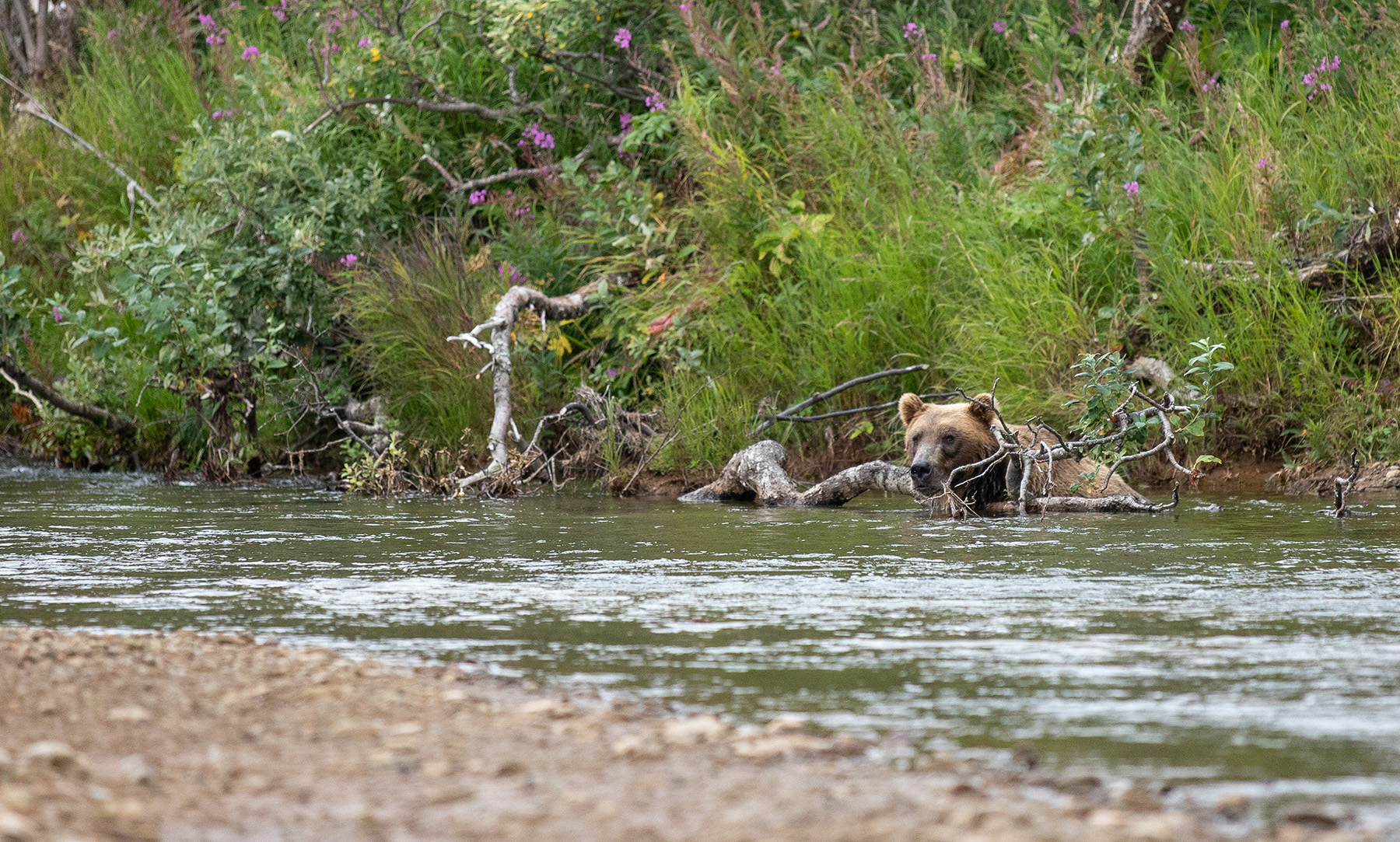
When I looked back at the bear, it dropped to all fours and in two strides reached top speed. It parted dense alders like they were sprigs of dry grass. I reached for the bear spray on my wading belt, realizing that with the stiff wind in my face, it was futile.
The bear was swallowed by thick alders. I thought for a moment it was gone. I was wrong.
When I looked back at Stumpf, now 15 yards behind me, he had the .45 magnum pointed past me. I looked back to see the bear erupt from the alders, leap a small creek, land on the gravel bar on which we stood, and keep coming. It got streamlined, fast, looking more like a speeding race dog than a massive bear. The ears were pinned back against its fat head. Hackles shimmered with each stride.
Related: The Best Bear Defense Handguns
I hit the rocks, laid flat, and hollered for Stumpf to shoot. He did, sending a round past me, right over the bear’s head. Less than 15 yards from me, the bear whirled and sprinted back into the brush. It happened so fast there was no anxiety. The encounter put us on full alert as we had three miles of water to fish over the next eight hours before the bushplane would return for us. Thoughts of what could have been kept our adrenaline pumping.
A week later a manager of Becharof National Wildlife Refuge issued a statement of caution for anglers to reconsider heading to this section of Featherly Creek. The sow and two cubs charged a guide and her clients and were overly aggressive toward them. The sow was thought to have also killed a boar while defending her cubs. A month prior this same sow ran multiple anglers from another creek, over 25 miles away. Though Stumpf and I never saw the cubs, they were close. The full story made us realize how lucky we had been.
A Lifetime of Close Calls
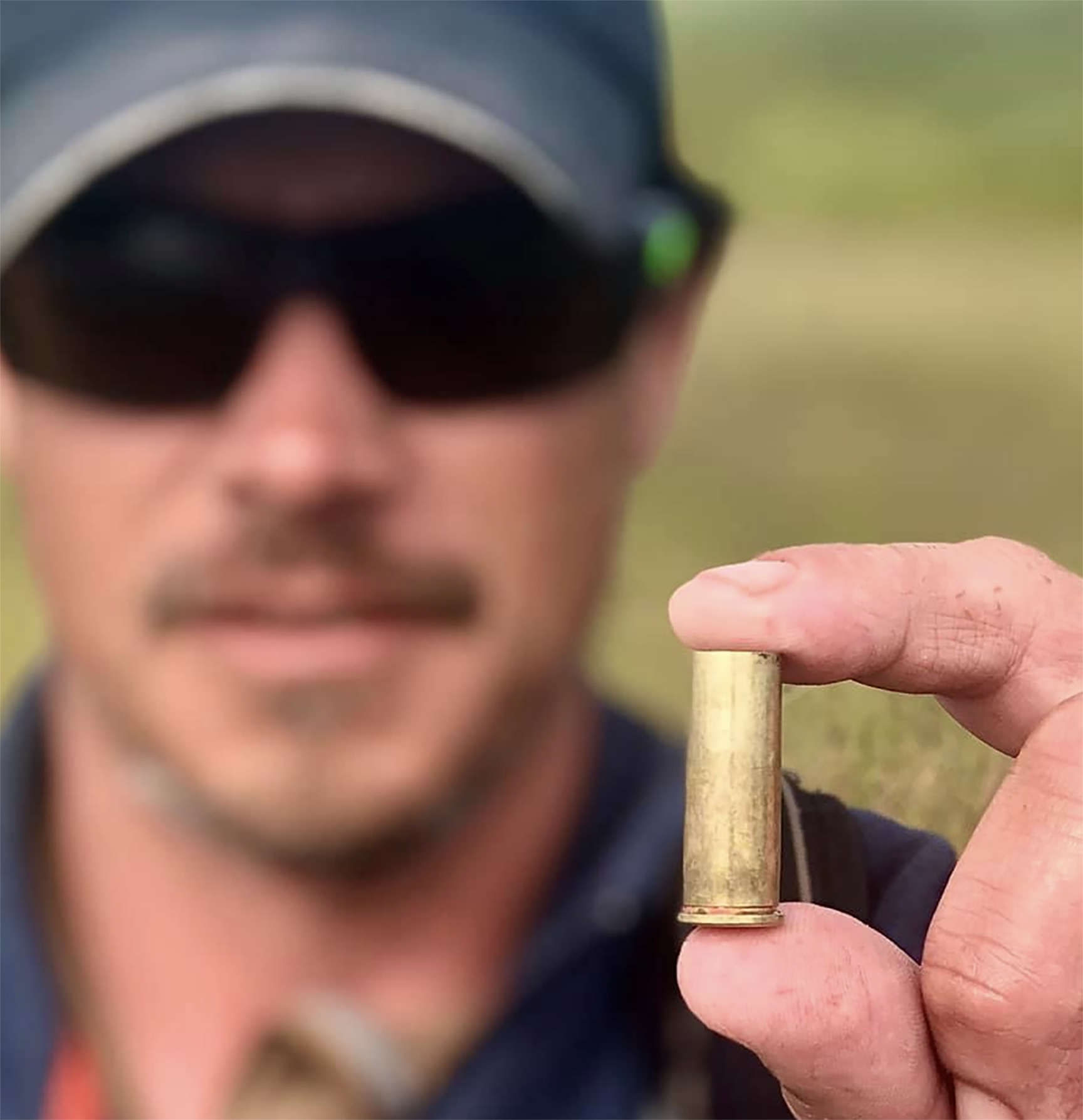
Spend enough time in remote Alaska and a bear encounter will happen. Over my 35 years of hunting and fishing throughout the state — and living in three different regions for nearly a decade — I’ve had many bear encounters.
Two things never cease to amaze me about Alaskan bears. One is how quiet they can be. Another is how fast they can reach top speeds. To see a 1,200 pound bear go from zero to 30 miles per hour in under five seconds is astonishing, something that must be witnessed to be fully understood.
One fall I was fishing a small salmon stream in Southeast Alaska when a grizzly came wading toward me. It was in stealth mode, slowly moving and searching for spawning coho along the shoreline. The creek flowed crystal clear. Each step the bear took in the moving, knee-deep, stream was eerily silent. Its moves were slow, patient, and precise. It cared less about me. Inside 20 yards, the encounter got my heart pounding even though I’d moved up onto a small rise on the bank. I was ready with firepower, just in case. The bear looked up at me, stared me in the eyes, then kept fishing.
Fish aren’t the only prey I’ve watched brown bears and grizzlies stalk. When hunting caribou one fall in the rugged Brooks Range — near my then home of Anaktuvuk Pass — a grizzly scaled a near vertical shale cliff in an effort to reach a band of Dall sheep. The sheer power and consistent speed with which the bear moved uphill was purely awesome. The bear made the 2,500-foot ascent look simple, not once breaking stride.
One summer I was fishing a remote stream in Katmai National Park, targeting big rainbow trout feeding on spawning sockeye salmon eggs. Brown bears were thick along the stream but not much of a worry as their bellies were full. Just as I locked in battle with a big trout, two immature grizzlies got in a wrestling match upstream. They frolicked, ran, jumped, snarled and knocked one another down. It was fun to watch until they lost track of where they were and got swept downstream in the main current. They were heading straight for me.
I had to break off the fish and quickly move to shore. That’s when I saw the sow watching from a treeline in front of me. The two sub-adult bears were three years old, I guessed. Still, they were more than capable of killing large prey, like me. I didn’t like the fact the sow was so near.
As I clawed my way to the top I looked back to see where the two bears were. One was still in the river, 25 yards away. The other was 15 feet behind me.
I headed downstream — making slow progress in waders — and reached a steep dirt bank along the river. It was pouring rain and I struggled to gain traction up a slippery, muddy bear trail. As I clawed my way to the top I looked back to see where the two bears were. One was still in the river, 25 yards away. The other was 15 feet behind me and coming up the same trail I was on. I whacked it on the nose with my fly rod. The bear paused and I quickly turned left on a trail. Fortunately, the young bear turned right and joined the sow. In all my years of fishing in Alaska, that was the only rod I broke, and it was over the nose of a brown bear.
When hunting Dall sheep one fall, a buddy and I spotted two big rams just before dark. They were too high to reach so we pitched a tent, then watched the rams in a spotting scope until dark. The next morning I unzipped the tent and grabbed the spotting scope. Still wrapped in a sleeping bag, I adjusted the tripod legs in the sand to look for the sheep. That’s when I discovered I’d set the tripod smack in the middle of a fresh grizzly track. Neither my buddy nor I heard that bear even though it had walked around the entire tent, a foot away from our heads at one point.
Another time in moose camp along a remote river on Southwest Alaska, a grizzly came in and drank a half-dozen cans of pop one night. Each can had been bitten into and the bear drank them empty through the holes. All this took place less than 10 feet from our tent, and we didn’t hear a thing.
Life and Death in Small-Town Alaska
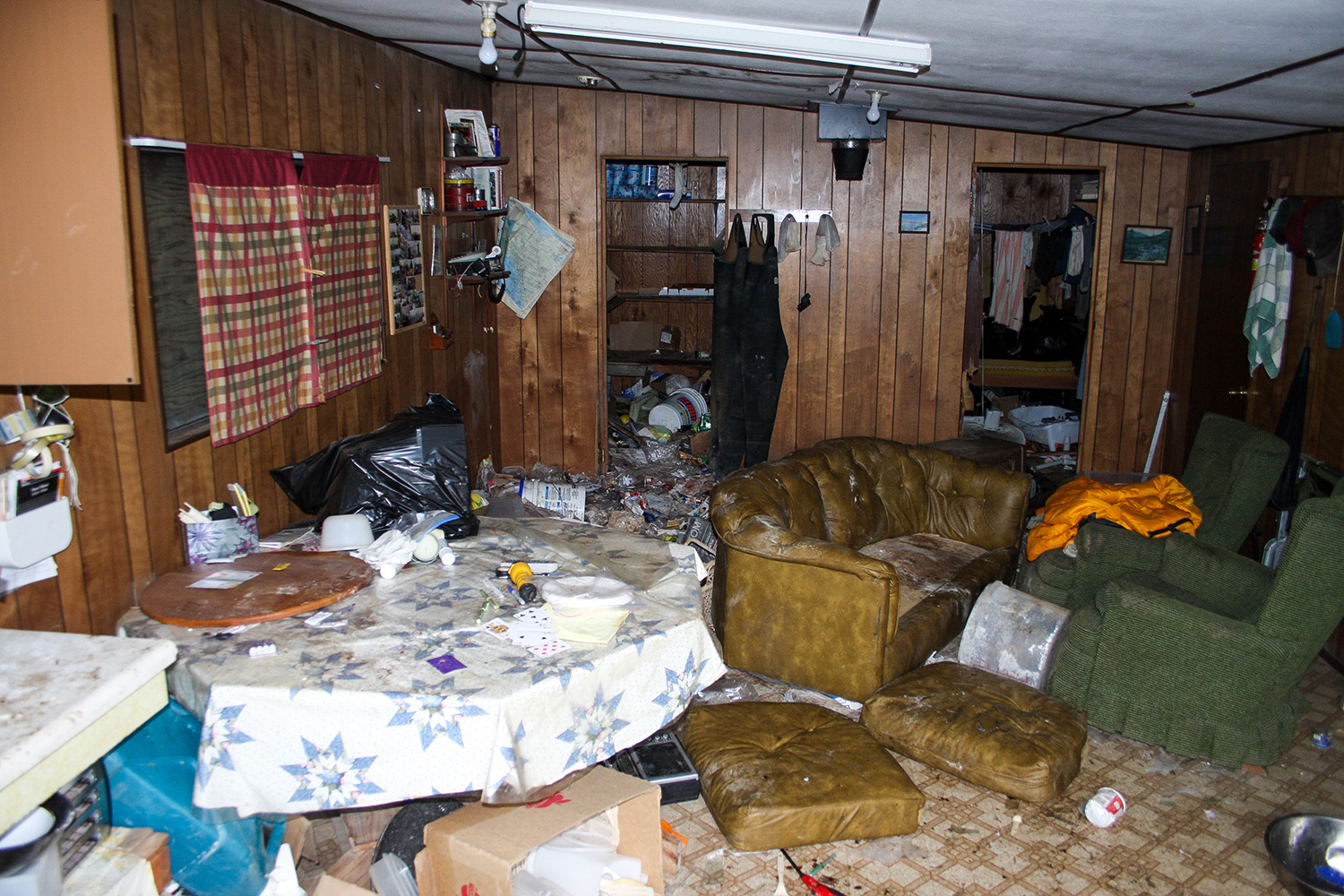
There have been other grizzly encounters over the years, many of them. From having to shoot one aggressive brute in the nose with a blunt while bowhunting elk high in Wyoming’s Absaroka Range, to one that got into our boat and chewed up the tiller handle and seats when we were fishing in Alaska. Another time a bear popped the wheels on a bushplane we’d parked on a gravel bar, prompting a satellite phone call for help.
In the fall of 2019 my wife and I moved to Hyder, Alaska. Hyder is the southernmost town in Alaska that’s on the road system. It’s the only place in the state where you can drive and see coastal brown bears fishing for salmon in small streams. Tens of thousands of tourists come here each summer and fall to see brown bears.
Living in Hyder for a year offered a unique perspective on these bears. We saw brown bears all the time, even into mid-December, wandering through several feet of snow. They were in streams, on the main roads, we even had them in our yard. Two days after we moved there, Les, a local man and one of fewer than 40 residents in the small town, warned us how serious the situation is, living with bears.
“Right over there’s where one guy was killed by a grizzly,” Les pointed, standing on our front porch, pointing to the paved road 30 yards away. “It happened fast. I barely had time to cover the body with some old plywood before the next tourist drove by. Then there was a string of tourists passing by for a half-hour before I could clean things up. No one had a clue they were driving a few feet from a man who’d just been killed by a bear, right in the middle of town.”
“The bear killed the guy as he walked right down the center of the road, in the middle of the day,” continued Les, reliving the terrifying encounter he witnessed some 30-years prior. “The man was a tourist, alone, trying to get close so he could take pictures with his little camera. You could tell by the bear’s demeanor it had had enough. The attack was fast. The bear tensed up, lowered its ears and was on the guy in a flash. When I saw what was happening I hollered to warn the man but he didn’t respond. It was over quickly, then the bear disappeared into the alders alongside the road. That was the first person I recall being killed by a grizzly here, and I’ve lived in Hyder over 50 years.”
Weeks later I was running my dogs in the tide flats south of Hyder when I bumped into Les. We often crossed paths in the small town.
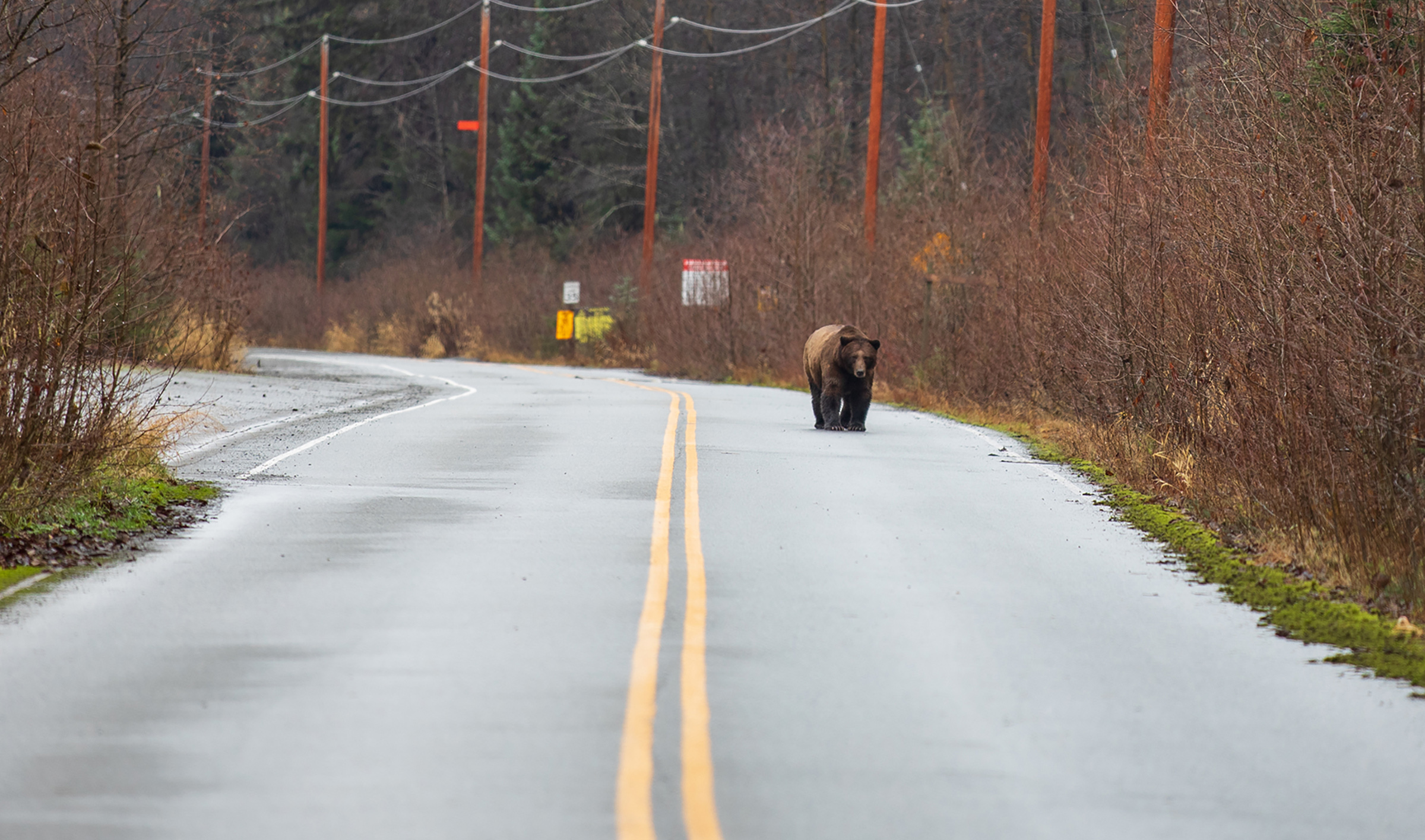
“You know, that grizzly just killed the guy because it was pissed off its space was invaded; it wasn’t the bear’s fault,” Les clarified “The bear was on the man so fast, it bit his head and broke his neck, instantly killing him. That wasn’t the case for the last man who was killed here by a grizzly.”
“The last man?” I asked.
Les had my attention and it didn’t take much prodding for him to divulge the details of the more recent attack.
“Billy was in bad shape,” Les continued. “He’d been battling cancer and it was getting the best of him. He was done with treatments and got delirious in his final days.”
According to Les, there was an old grizzly living near the dump on the south end of town. The bear found an easy way to get food and everyone who went to the dump had run-ins with the bear. But the bear stayed out of town, so no one felt the need to kill it. Though it would approach people when they went to the dump, it wasn’t overly aggressive — it just wanted food scraps.
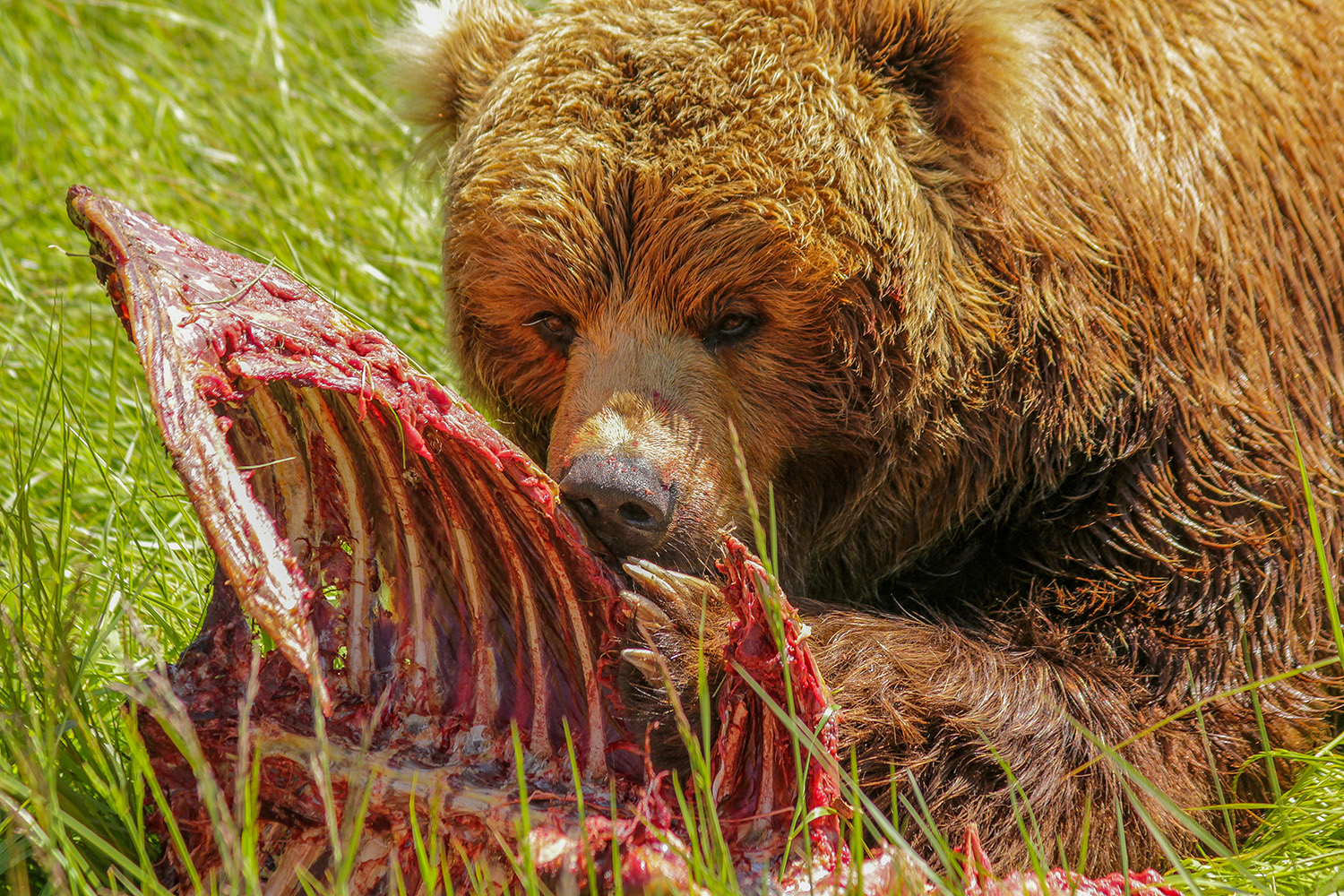
“For some odd reason, Billy took his sleeping bag and a tarp and headed in the direction of the dump, where he spent a few nights. We warned him about the bear, but Billy wasn’t listening. One night I tried to get him to stay at my house because a storm was coming, but Billy belligerently refused.
“The next morning I went to check on Billy and could see from a distance what had happened,” Les said, his gray eyes staring into mine. “Billy didn’t have all his wits, he was a lot worse than he led folks to believe. I’m not saying Billy had a death wish, just that he wasn’t thinking clearly.”
When he approached the body, even Les was shocked.
“That bear did a number on him, and now that it had a taste of human blood, there was only one thing to do.”
Les knew bears. He’d hunted and trapped them for over 60 years in Alaska. He had lived among them for decades, both in Alaska’s interior and here, along the southern coastline.
Now that it had a taste of human blood, there was only one thing to do.
“One thing people don’t seem to understand about bears is how quickly they can turn,” Les emphasized. “People assume once bears live in a town, eating from dog dishes and the local dump, they’re all of a sudden pets. These are potentially the most dangerous bears of all. They’re the king of the food chain and need to be taken very seriously.”
After covering Billy’s body with what remained of the sleeping bag, Les sped home, grabbed his rifle and took off in search of the man-eater. Billy had been killed in a river bottom. Spruce trees intermixed with cottonwoods and willows, along with thick underbrush, made navigation only possible on hands and knees in places.
It didn’t take Les long to find the killer. When Les made eye contact with the bear at close range on a bear trail, the bruin’s ears laid back and Les knew what was coming. That’s where Les’s hunting experience paid off. He didn’t hesitate shooting.
There was no doubt in Les’s mind he’d shot the man-eater, and closer inspection confirmed it.
“As soon as my knife slit open the bear’s stomach, I saw Billy’s left ear, attached to a strip of skin from his neck that was torn halfway up the skull. There was still hair on it. The more I dug, the more human remains I found in the bear’s stomach.”
A couple years ago, Les himself died of natural causes. I’ve always wondered what stories he hadn’t told me.
Neighborhood Watch
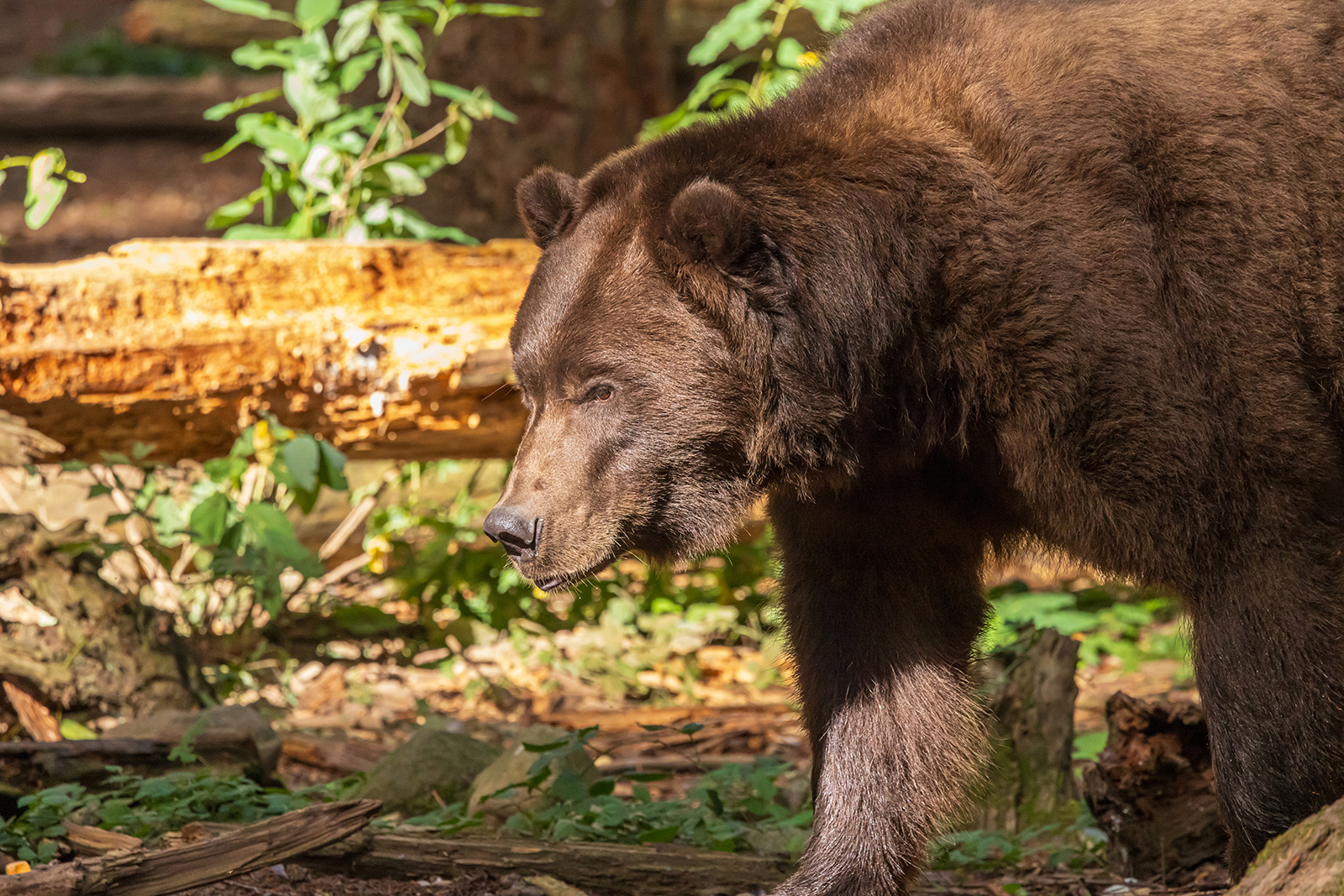
For most of the 1990s my wife and I lived in Alaska’s high Arctic. We were schoolteachers in two extremely remote Inupiat villages, Point Lay and Anaktuvuk Pass. Here, two months of total darkness consumed every winter, and you could count on months straight of sub-zero temperatures. Sixty below zero was typical on many winter days.
Bear encounters in the Arctic were also a sure bet. During our first year on the North Slope, in the tiny village of Point Lay, there was a man-eating polar bear I tracked and killed one December morning amid total darkness and 42-below-zero temperatures. There were other problem polar bears shot in Point Lay during our time there. Those stories are for another time. Grizzlies frequented it, too.
One fall a big boar grizzly kept robbing caribou meat racks outside homes, including ours. Despite the moonscape tundra, and only a handful of dark hours in September, the grizzly still managed to routinely sneak in. It was briefly seen by people several nights in a row. Children were instructed to quit playing outside at dusk. Residents were on guard, some of the men patrolling the outskirts for the marauding grizzly.
Finally, after nearly two weeks of catching only fleeting glimpses of the bear, a gunshot rang out in the night. Our neighbor, a Native man named Jack Stalker, had shot the massive grizzly right through his kitchen window as it ate caribou hanging on a meat pole, mere feet away. I ran to his house upon hearing the shot and was surprised to see shattered glass; he hadn’t wanted to open the window for fear of spooking the grizzly, and instead shot right through it. Jack made one of the coolest bear claw necklaces I’ve ever seen and gave it to my wife, Tiffany, as a gift. She still has it.
Read Next: My Hunt for the Man-Eating Lions of Matiyani
When in the land of grizzly bears, you never know what will happen. Over the years I’ve learned to respect a bear’s space, read their body language, anticipate their moves, and stay calm. I love hunting, photographing, and sharing fishing holes with bears, as few experiences I’ve lived put my senses on such high alert.
Do I fear grizzlies? No. But I carry a heightened level of respect for these giant predators knowing that one mistake, one wrong move, or any delayed reaction could mean the end. When in grizzly country, prepare for the unexpected and always be on full alert. Always.
The post I Fought Off a Brown Bear with My Fishing Rod, and Other Close Calls While Living in Remote Alaska appeared first on Outdoor Life.
Source: https://www.outdoorlife.com/survival/close-calls-alaska-bear-country/



